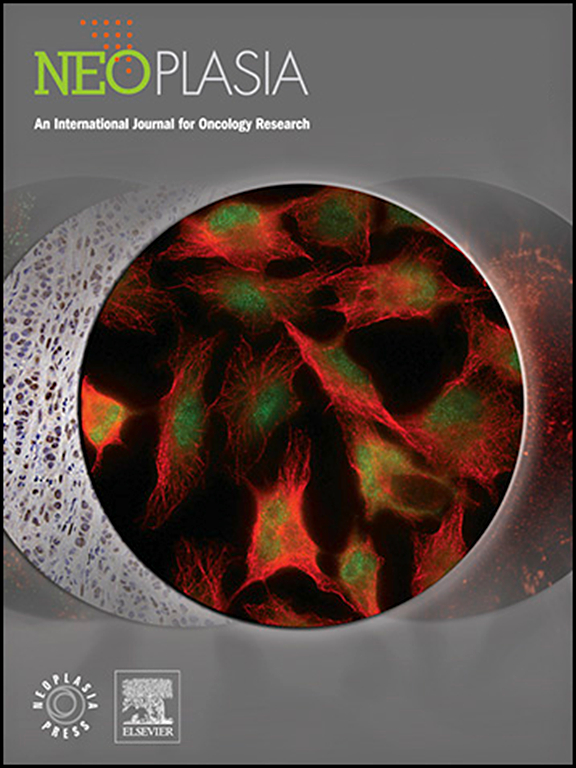Epigenetic DNA modifications and vitamin C in prostate cancer and benign prostatic hyperplasia: Exploring similarities, disparities, and pathogenic implications
IF 4.8
2区 医学
Q1 Biochemistry, Genetics and Molecular Biology
引用次数: 0
Abstract
Objectives
Benign Prostatic Hyperplasia (BPH) and Prostate Cancer (PC) are very common pathologies among aging men. Both disorders involve aberrant cell division and differentiation within the prostate gland. However, the direct link between these two disorders still remains controversial. A plethora of works have demonstrated that inflammation is a major causative factor in both pathologies. Another key factor involved in PC development is DNA methylation and hydroxymethylation.
Methods
A broad spectrum of parameters, including epigenetic DNA modifications and 8-oxo-7,8-dihydro-2′-deoxyguanosine, was analyzed by two-dimensional ultraperformance liquid chromatography with tandem mass spectrometry in tissues of BPH, PC, and marginal one, as well as in leukocytes of the patients and the control group. In the same material, the expression of TETs and TDG genes was measured using RT-qPCR. Additionally, vitamin C was quantified in the blood plasma and within cells (leukocytes and prostate tissues).
Results
Unique patterns of DNA modifications and intracellular vitamin C (iVC) in BPH and PC tissues, as well as in leukocytes, were found in comparison with control samples. The majority of the alterations were more pronounced in leukocytes than in the prostate tissues.
Conclusions
Characteristic DNA methylation/hydroxymethylation and iVC profiles have been observed in both PC and BPH, suggesting potential shared molecular pathways between the two conditions. As a fraction of leukocytes may be recruited to the pathological tissues and can migrate back into the circulation/blood, the observed alterations in leukocytes may reflect dynamic changes associated with the PC development, suggesting their potential utility as early markers of prostate cancer development.
前列腺癌和良性前列腺增生中的表观遗传 DNA 修饰和维生素 C:探索相似性、差异性和致病影响。
目的:良性前列腺增生症(BPH)和前列腺癌(PC)是老年男性中非常常见的病症。这两种疾病都涉及前列腺内异常的细胞分裂和分化。然而,这两种疾病之间的直接联系仍然存在争议。大量研究表明,炎症是这两种病症的主要致病因素。参与 PC 发病的另一个关键因素是 DNA 甲基化和羟甲基化:方法:采用二维超高效液相色谱-串联质谱法分析了良性前列腺增生症、PC 和边缘型 PC 组织以及患者和对照组白细胞中的一系列参数,包括表观遗传 DNA 修饰和 8-氧代-7,8-二氢-2'-脱氧鸟苷。在相同的材料中,使用 RT-qPCR 测量了 TETs 和 TDG 基因的表达。此外,还对血浆和细胞(白细胞和前列腺组织)中的维生素 C 进行了量化:结果:与对照样本相比,发现前列腺增生症和前列腺癌组织以及白细胞中的 DNA 修饰和细胞内维生素 C (iVC) 具有独特的模式。大多数改变在白细胞中比在前列腺组织中更明显:结论:在 PC 和前列腺增生症中都观察到了特征性的 DNA 甲基化/羟甲基化和 iVC 图谱,这表明这两种病症之间可能存在共同的分子途径。由于一部分白细胞可能被招募到病理组织中,并可迁移回血液循环,因此观察到的白细胞变化可能反映了与 PC 发展相关的动态变化,这表明白细胞有可能成为前列腺癌发展的早期标志物。
本文章由计算机程序翻译,如有差异,请以英文原文为准。
求助全文
约1分钟内获得全文
求助全文
来源期刊

Neoplasia
医学-肿瘤学
CiteScore
9.20
自引率
2.10%
发文量
82
审稿时长
26 days
期刊介绍:
Neoplasia publishes the results of novel investigations in all areas of oncology research. The title Neoplasia was chosen to convey the journal’s breadth, which encompasses the traditional disciplines of cancer research as well as emerging fields and interdisciplinary investigations. Neoplasia is interested in studies describing new molecular and genetic findings relating to the neoplastic phenotype and in laboratory and clinical studies demonstrating creative applications of advances in the basic sciences to risk assessment, prognostic indications, detection, diagnosis, and treatment. In addition to regular Research Reports, Neoplasia also publishes Reviews and Meeting Reports. Neoplasia is committed to ensuring a thorough, fair, and rapid review and publication schedule to further its mission of serving both the scientific and clinical communities by disseminating important data and ideas in cancer research.
 求助内容:
求助内容: 应助结果提醒方式:
应助结果提醒方式:


